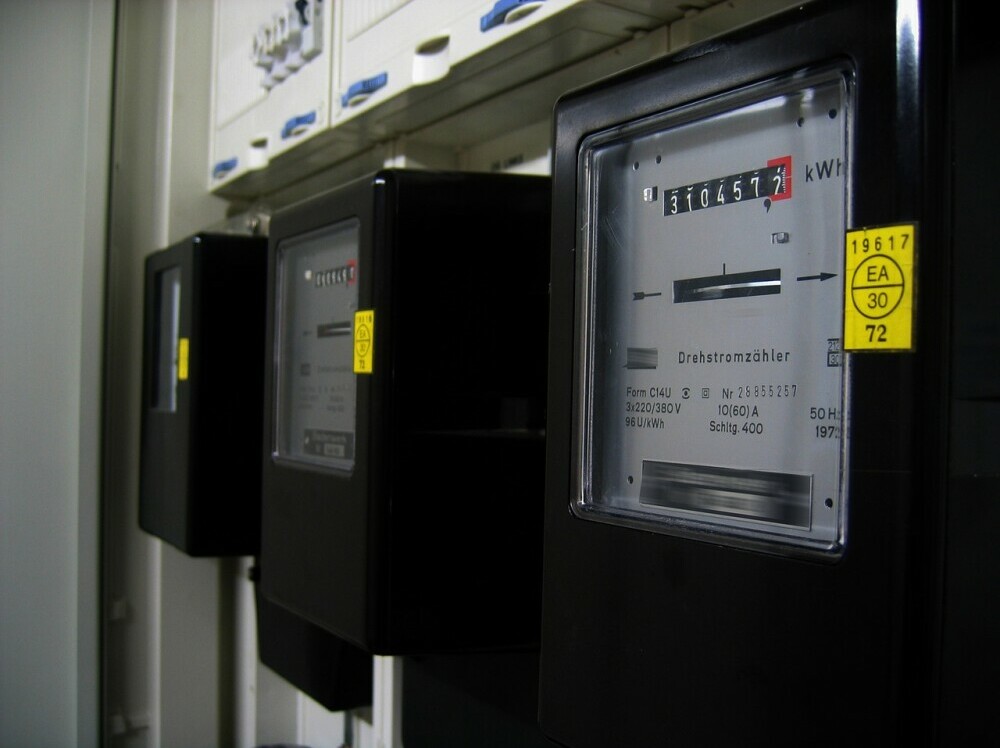
Table of Contents
We all want to reduce energy consumption at homes but, the question is how can do it efficiently while leaving a positive impact on our lovely planet? It’s not just about slashing your utility bills – although that’s a big perk – it’s also about stepping up for the planet. By cutting down on energy consumption, you’re contributing to a much-needed environmental mission, combating issues like climate change and resource depletion.
But there’s more. You’re going to find out about how energy-efficient homes are not just kind to your wallet and the earth; they boast a superior level of comfort and, often, increased property value. Plus, achieving this doesn’t require monumental changes; many steps to increase efficiency are actually quite straightforward and manageable.
Now, if you want to get serious about reducing your home’s energy consumption, the first rule is to understand where and how you’re using energy. That’s going to include identifying the spots where energy might be escaping without you knowing. And this brings us to the importance of a home energy audit – a methodical approach that’s going to reveal exactly where your home stands in terms of energy efficiency.
Conducting a Home Energy Audit
I’m going to walk you through how to pinpoint energy inefficiencies in your home. It’s not just about lowering your bills; it’s also about enhancing your home’s overall performance. Think of a home energy audit as a doctor’s check-up for your house. It helps diagnose where your home is losing energy and what you can do to save money and live more comfortably.
If you’re wondering where to start, don’t worry. You can always adjust your approach down the road. First off, create a checklist of areas to inspect: windows, doors, attics, and heating and cooling systems. Look for drafts, check insulation, and review your energy bills for unusual spikes in usage.
You’re going to find out about professional energy audit services that offer a detailed assessment. These pros use tools like blower doors and infrared cameras to detect hard-to-find energy leaks. While DIY audits are helpful, a professional assessment can give you a complete picture and customised solutions for your home.
Smart Temperature Management
Managing the temperature in your home smartly can lead to significant energy savings. This isn’t just about staying comfortable; it’s also about using energy in the most efficient way possible. I’m going to help you with strategies that keep your house at the ideal temperature without wasteful excess.
Firstly, thermostat optimisation is key. You don’t need to keep your home at a constant temperature all the time. Lowering the thermostat by a few degrees during winter nights or raising it during summer when you’re not at home can reduce your energy bill and still keep your living space comfortable when it matters most.
Insulation plays a crucial role too. If your home is poorly insulated, you’re going to lose a lot of the energy you’re paying for. Check the insulation in your attic, basement, and walls, and seal up any cracks around windows and doors. Ambitious? You might want to look into newer, more efficient forms of insulation, like spray foam.
Lastly, if you’re serious about smart temperature management, consider investing in a programmable thermostat or a smart home system. These devices let you set temperature preferences for various times of the day and automatically adjust settings for optimum comfort and efficiency. With a smart system, you can even control your home’s temperature remotely, ensuring you’re not heating or cooling an empty house.
Investing in Energy-Efficient Appliances

Now, let’s talk about what’s chugging along in your home and contributing to your energy bill: your appliances. From refrigerators to washing machines, the devices we rely on every day can be quite a drain on our energy resources if they’re not chosen with efficiency in mind.
When you’re out shopping for a new appliance, keep an eye out for models that boast high energy efficiency. They often come with an Energy Star rating, which means they meet or exceed standards set by the Environmental Protection Agency and the Department of Energy for low energy consumption.
You might be thinking, ‘Do energy-efficient appliances make that much of a difference?’ The answer is a resounding YES. Even though they can have a higher upfront cost, these appliances can save you money on your energy bills in the long run, making them a wise investment. Plus, they’re doing Mother Earth a solid by reducing your carbon footprint.
Make sure to look at the Energy Guide label. It will tell you how much energy an appliance uses and provide you with estimates of the annual operating cost. That way, you can compare the lifetime costs of various models and figure out which ones are going to keep more money in your pocket over time.
It’s not just about the big-ticket items, either. Even smaller appliances can contribute to your energy-saving efforts. Think blenders, toasters, or even coffee makers. Opt for energy-efficient versions whenever possible.
Let’s move from the kitchen to another water-heavy area of the home. In the next section, we’ll explore how smart water use isn’t just about saving H2O but also the energy involved in heating and distributing it throughout your home.
You can read more about how you can reduce the energy consumption at home by clicking here.
Conserving Water to Save Energy
You might not immediately link water usage with energy consumption, but the two are pretty closely connected. Every time you turn on a tap, you’re not just paying for the water, but also for the energy to heat that water and pump it into your home.
To get a grip on this, consider showering as an example. A hot shower feels great, but it’s also a double whammy on your energy bill. Heating water accounts for nearly 17% of residential energy use according to the US Department of Energy. By cutting down on your shower time or switching to a more efficient shower head, you can lower both your water and energy bills.
And it’s not just showers. Appliances like your washing machine and dishwasher also consume significant amounts of hot water. Choosing models designed to be effective at lower temperatures can make a substantial difference. Along with those changes, always aim for full loads to make the most efficient use of water and energy.
Another quick win is fixing leaks. A leaky faucet wasting one drip per second can cost an extra dollar per month. It doesn’t sound like much, but it adds up. Plus, you’re also paying for the energy to heat that wasted water if it’s from the hot tap.
Additionally, low-flow faucets and toilets can reduce your water consumption without you even noticing. This subtle switch can amount to savings of gallons of water a day—plus all the energy you’d use to heat up that extra water.
With these measures in place, you’re all set for the next step: re-evaluating your home lighting and electronic devices for energy savings. Stick around, and I’m going to tell you how you can make some bright choices that are kind to both your wallet and the planet.
Lighting and Electronics Strategies for Lower Energy Use
I’m here to help you with your home’s lighting and electronics, which can be major energy hogs if not managed properly. Have you ever wondered if switching to LED light bulbs saves that much energy? Guess what? They do. LEDs use up to 90% less energy and last up to 25 times longer than traditional incandescent bulbs. This isn’t just about changing bulbs; it’s also about choosing quality LEDs with the right lumens for your needs.
Now, don’t worry too much about the term ‘phantom load.’ It’s just industry jargon for the power your devices consume when they’re plugged in but not in use. To tackle this, I’m going to show you why using smart power strips is a clever move. They can cut off the power supply to devices that don’t need to be on all the time, which can lead to noticeable savings on your energy bill.
You’re also going to find out about the importance of implementing a household electronics usage policy. This includes setting guidelines for screen time and ensuring devices are shut down or set to power-saving modes when not in use. This practice doesn’t just reduce energy consumption; it can also encourage healthier living habits.
Making a Habit to reduce energy consumption at home
Developing energy-saving habits isn’t a one-time deal; it’s a continuous commitment that involves every member of the household. The key is to cultivate a culture where every little action is seen as part of a bigger picture – reducing your energy footprint and, in turn, protecting the environment while cutting down costs.
Start small by integrating simple actions, such as turning off lights when not in use, unplugging idle electronics, and using natural light whenever possible. Educate family members about the difference these small changes can make over time.
Regularly monitor and review your energy bills. This isn’t just about tracking expenses, it’s also about seeing the tangible results of your efforts. If you notice a decrease in energy use, celebrate that success to motivate everyone to continue these good practices.
Remember that as you make these changes, you’re going to find a rhythm that works for your lifestyle. You can always adjust your approach down the road – change is constant, and being flexible with your energy-saving strategies will help ensure they’re sustainable in the long run.
In my opinion, building an energy-conscious home is about making thoughtful choices that resonate with your values. Choose something that resonates with you and your family, and let that guide your journey towards a more energy-efficient life at home.
I hope that you’ve found this guide useful and that it propels you towards taking action. If you’ve ever wondered if your effort makes a difference, guess what? It does. You can contribute to a larger global effort right from your living room, kitchen, or bedroom, simply by making informed decisions daily.
Thanks for reading, and I’d love to hear how you go about integrating these energy-saving practices into your daily life. Share your experiences, your triumphs, and even your challenges – let’s inspire each other to keep making strides toward a more sustainable and energy-efficient world.
kay,
greeenlifehub.com
